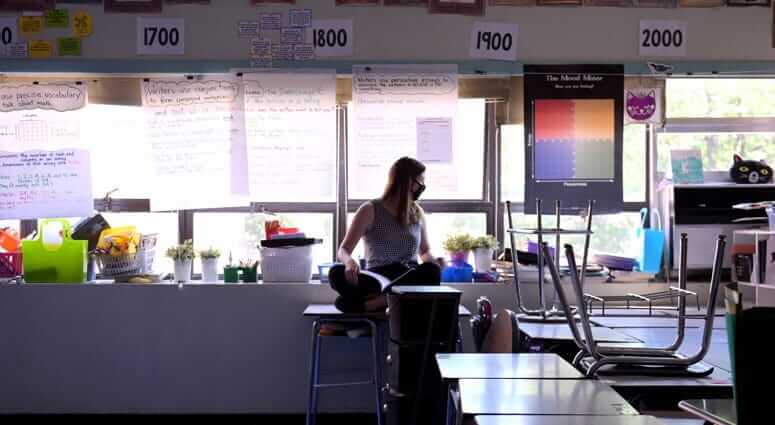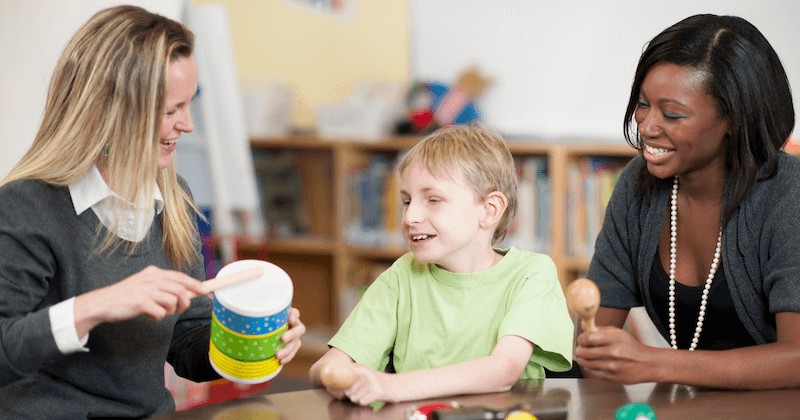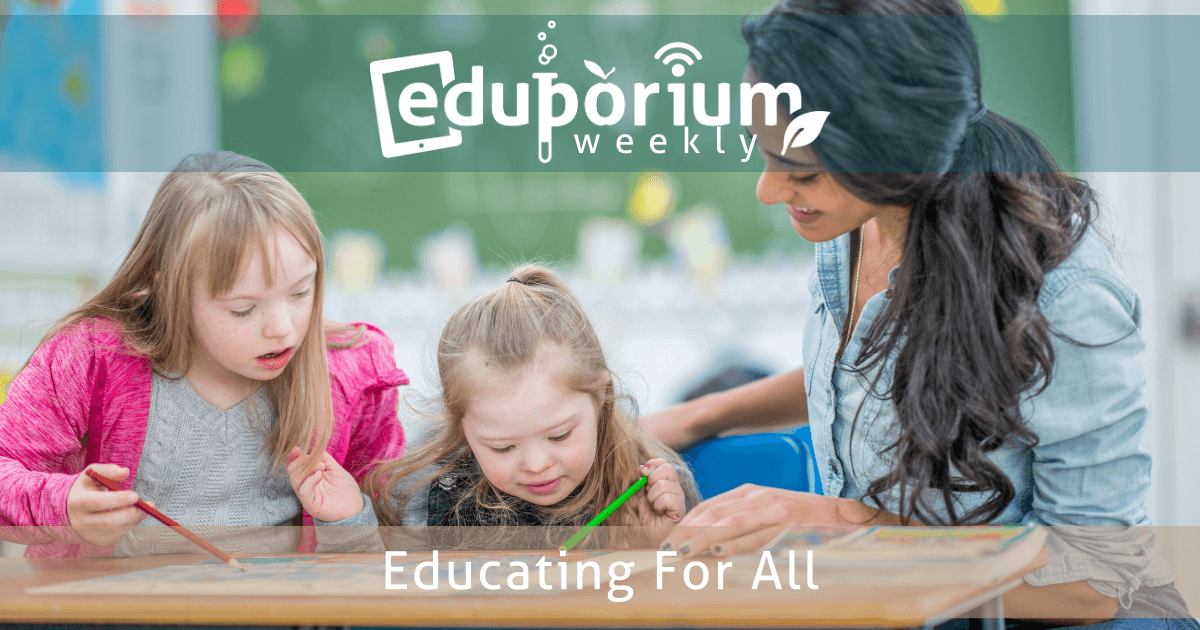Like many others, we’re big proponents of personalizing the education experiences of each student. Some prefer lectures, others prefer hands-on exploration, and still others learn best through reading. In the remote learning era, however, it’s become tougher for educators to personalize their instruction all while knowing that some students truly need it. There’s also learning differences to consider. It’s been widely documented how difficult it’s been for special education students and teachers in distance learning. Though we’re a year into this new form of education, teachers are still learning about how to best work with special education students from afar. And, this week, that’s our topic for exploration.
Supporting Learning Differences in Remote Education
Learning differences include a number of various conditions. Whether referred to as disabilities, learning differences, or something else, they affect a large portion of students and that’s no different in distance learning. For many of these students, structure in learning is key. The constant changes and evolutions that we’ve come to associate with distance learning are not ideal. This can mess with the routines they know and also result in these students feeling a lot more anxious. Many students with learning differences require personalized plans to ensure the best conditions for them academically and socially. Some of the steps teachers can take to address these needs include making modifications to their tone, communication, and how they deliver lessons to these students.
Clear communication and routines.
Some of the strategies teachers can use are actually similar to those used in remote learning by teachers in general. In addition to clear communication outside of class times, explicit communication is important any time they’re talking to students. Providing explicit instructions, rules, and expectations helps make things run a lot more smoothly. This also helps create a sense of structure and helps students get used to new environments. Having a set schedule and sticking to it constantly can help students like this prepare for and approach their next tasks. Schedules also help with keeping student anxiety in check, boost learning outcomes, and decrease instances of misbehavior. Plus, this organization also ties in with following rules and mirrors what they used to know from the physical classroom.
Picking up where things left off.
Some of the best ways to create continuity for students with learning differences is to simply keep going. Starting and ending classes at the same time is one element. Setting the same rules and expectations as they were used to in the physical classroom is another. Then, there are other strategies to think about, including when and how students can ask questions, utilizing consistent greetings, and incorporating phrases in instruction that are familiar to them. Beyond that, preaching the importance of time management in remote learning is also helpful. Encouraging students to stay organized and to continue progressing as remote learning forges on can help it become just another part of their routine.

Feedback and Flexibility in Remote Settings
All students benefit from feedback, but this is especially true for special education students. Not only is feedback key for their progress, positive reinforcement is also important for their morale. Without thoughtful feedback, however, they may lose sight of their progress and goals. Engaging tasks and projects often work best for helping students develop remote learning routines and also give teachers the chance to personalize feedback. Especially since much of remote learning requires independence, it can be tough for these types of students to self-motivate. With the right feedback, however, it becomes more natural. If students can start to provide their own feedback, that would be even better.
Finding the right flow for feedback.
Of course, we can’t rely on special education students to create and implement their own feedback. They often need explicit feedback from teachers in order to meet their learning goals. Teachers may tend to lose some of the personal connections with students in remote learning as well, which creates more opportunities for disengagement. Teachers can’t pull a student aside, for example, and quickly get them back on track. They also might have had the benefit of an aide or paraprofessional in the physical classroom with them previously—a luxury that’s not really possible in remote learning. The best thing teachers can do in terms of behavior and assignments is to provide students with feedback as immediately as possible. That way, it’s hopefully still at least somewhat fresh in their minds and they can use the feedback going forward.
Remember to stay flexible.
While developing routines is important in special education, so too is staying flexible. Students may often need personal guidance and allowing time for this in the structure of the class can be beneficial. For example, these students might typically need concepts explained in several different ways before mastering it. This will certainly hold true in remote learning and may actually require more patience from teachers. Allowing for different assessment options can help keep students engaged and allow them to show their comprehension more easily. Sharing assignments with students earlier and allowing more time for completion also might help. Though it seems strange, building flexibility into remote learning routines can be beneficial for these students.
Continuing to Meet Student Needs Remotely
We all love having day-to-day routines whether it's for convenience, rhythm, or something else. For some students, however, it's essential to their continued development. When remote education first began, creating brand-new routines for students who need special attention presented educators with one of their toughest challenges yet. That initial transition proved bumpy in many cases. What actually got many teachers and students through it, however, was the availability of technology. Able to meet and check in remotely, it's become easier for teachers to fill these gaps. And, in some cases, they're joined by the paraprofessionals they're used to having by their sides or administrators drop in to offer extra support. It's not the same as the classroom, but this added support is certainly helpful.
Flipping the script on traditional learning.
For special education students, it may not always need to be about teaching new material in remote learning. Understandably, this could get tough to accomplish, so simply having conversations and stoking their imaginations is an alternative. With online tools available, teachers can help facilitate gamified learning experiences for these students. It doesn't have to necessarily be a situation of sitting them down and drilling home new concepts. Some of these students might certainly learn better by playing a math game rather than watching teachers work out a problem on a whiteboard, for example. Like we've said many times in the last year, it's all about what works best for individuals.
Filling the gaps with a team approach.
It shouldn't be understated how gamifying everyday academic content and concepts can help with engagement. Being able to see how students approach problem solving in this environment also helps educators provide that all-important feedback. For some special educators, the multimodal method has proven most successful. This allows for one-on-one support in terms of academic work and other education professionals to simultaneously fill in the gaps. Whether students need speech services, reminders, social-emotional check-ins, or something else, instructional teams are often more effective than individual teachers—something that might not be an option, but would be closer to ideal.

3 Ways to Engage Special Education Students
Remote learning is all about engagement. Without student buy-in, it's not going to be very effective. The same is often true for special education instruction. On top of that, it's often tougher for teachers to keep these students engaged and focused. One way to do this is to make learning hands-on (as long as that's possible for students). Since homes have turned into (and remained) classrooms for many special education students, they've had to get used to a new situation. If parents or guardians are there with students during instruction, simply using what's available can help these students build basic skills. Doing a scavenger hunt, for example, can help them work on directional skills, vocabulary, visual cues, and independence.
Digital resources in special education.
Another approach is one that's similar to mainstream remote learning. Using digital resources to both engage and advance learning opportunities can be effective. The interactive nature of many digital resources, specifically, is something special education students typically respond to. Whether it's a web-based resource or a mobile app, getting students thinking and reacting is very beneficial and this can be done from home assuming they have reliable Internet access. Providing them with digital tools and assignments can also help students learn about how to use computers to find information and make their lives easier.
SEL and remote special education.
Finally, even in using digital tools, it's still important to address social-emotional needs. Many online tools designed for remote learning include a social-emotional element, which is great. Being able to help students work on social-emotional skills while also getting comfortable with digital skills is a good use of their remote learning time. Remember, many special education students might be stressed about learning in a new way and in a new place. Restoring their social-emotional balance is key to helping them be able to learn new things. Just don't overload them with too many resources and expectations all at once!
Preventing Special Ed Students from Regressing
For parents of special education students, remote learning is often quite a mountainous challenge. Besides taking care of their kids and continuing to manage a household, many of these parents have assumed the role (or at least a large portion) of educating their children. The biggest difference, however, is that they're essentially doing it alone—without the benefit of aides, paraprofessionals, and even a degree. For however long these students are out of the physical classroom, they risk more than simply not learning new material and skills. The likelihood that their previous knowledge will fade is increased and, perhaps equally as important, their social skills could evaporate.
IEPs in remote learning.
Special education students don't all just receive the same instruction as others in a typical school day. Many of them have individual education plans (IEPs) created for them. And, many of these IEPs include specialized services that stretch beyond academics. Many students, for example, meet with speech language pathologists to work on their verbal skills. Others may need to spend time with an occupational therapist or a physical therapist—services that they've likely missed out on since school doors closed almost a year ago. These plans contain the support and resources special education students need in order to make academic and social progress—and they're a right that's protected by law.
The struggle of virtual learning.
IEPs also contain information that essentially serves as an educational blueprint for each student. They even contain information like how long their classes should be, when they should take place, the ideal setup of their home learning space, and what additional services are needed. Though it's not ideal, the next best thing has been for students to continue meeting with all of the professionals they see remotely. As long as these services remain available virtually, every little bit will help but, if they're not, it could leave these students more vulnerable. Overall, parents have limited control over the outcomes of their efforts, but in figuring out what works and what does not, they can try to supplement the academic and social interactions for their children—even as they're happening virtually.
For the latest EdTech, STEM, and 21st century education news, follow us on Twitter and Instagram. Like us on Facebook, too, or sign up for our newsletter for our latest product announcements and offerings. If you have an idea for an Eduporium Weekly theme, send us a message on social media or comment below. If you'd like to share your experiences with remote special education, feel free to leave a comment as well.




1 Comment